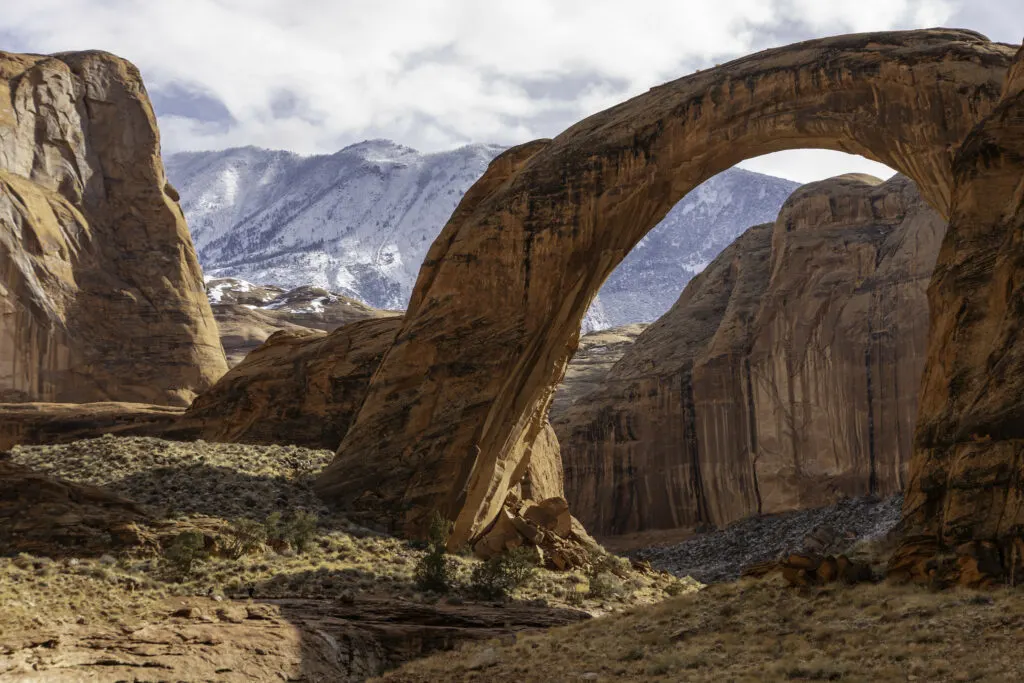Looking for a comprehensive list of Utah National Monuments & Parks? You have come to the right place.
Utah is a cool place. One of the biggest reasons why it is so darn cool is the extensive list of national monuments and parks it has. In our opinion, Utah has some of the best landmarks in the whole of the United States.
Here is the full list to add to your Utah travel itinerary. Why not plug these into google maps and make a road trip!
List of Utah National Monuments & Parks
There are 19 National Parks and monuments in Utah including:
- 5 National Parks
- 8 National Monuments
- 1 National Recreation Area
- 1 National Historical Park
- 4 National Historic Trails
Utah’s 5 Big 5 National Parks
Arches National Park
Arches National Park is one of the best National Parks in the United States. It is very iconic due to the red rock arches throughout the park.
The most famous arch in the park is Delicate Arch, which is a modern hike uphill (bring plenty of water) followed by an impressive view of the iconic arch over the valley below.
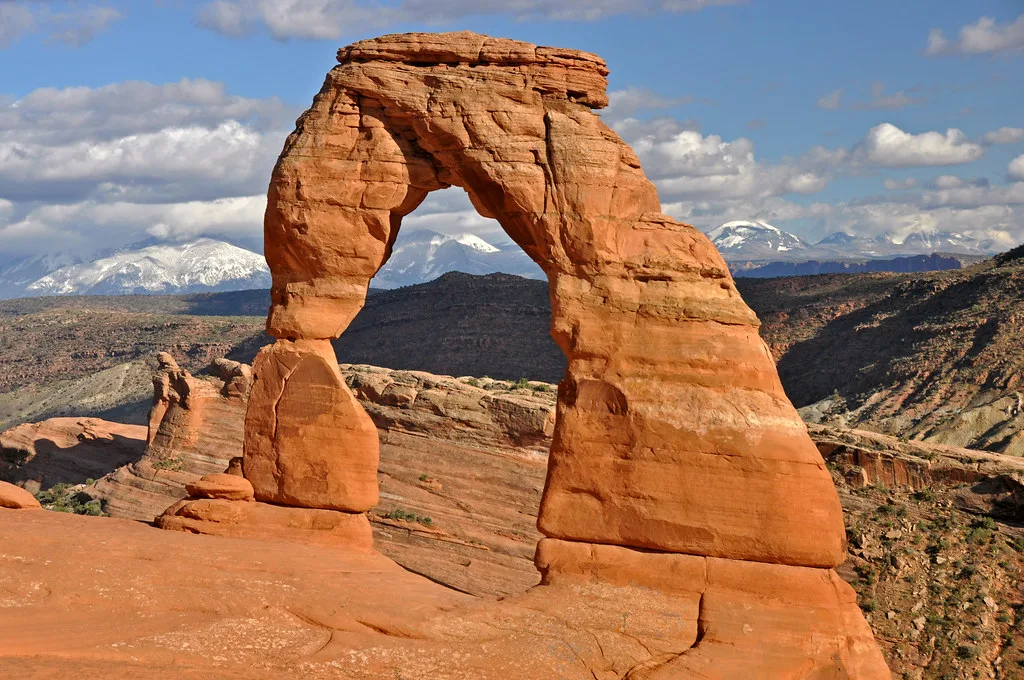
Bryce Canyon National Park
Bryce Canyon National Park is a breathtakingly unique park located in southwestern Utah. With its deep red-orange hoodoos, intricate spires and stunning vistas, it’s a visual feast for visitors.
There are many activities to enjoy at the park, such as hiking, horseback riding, camping, and backpacking. You can also take in the incredible views by helicopter or take a guided tour.
There are a number of different trails to explore, each offering its own unique views of the park’s incredible landscape. Whether you’re looking to take in the views or take part in some of the activities, Bryce Canyon National Park is an unforgettable experience.
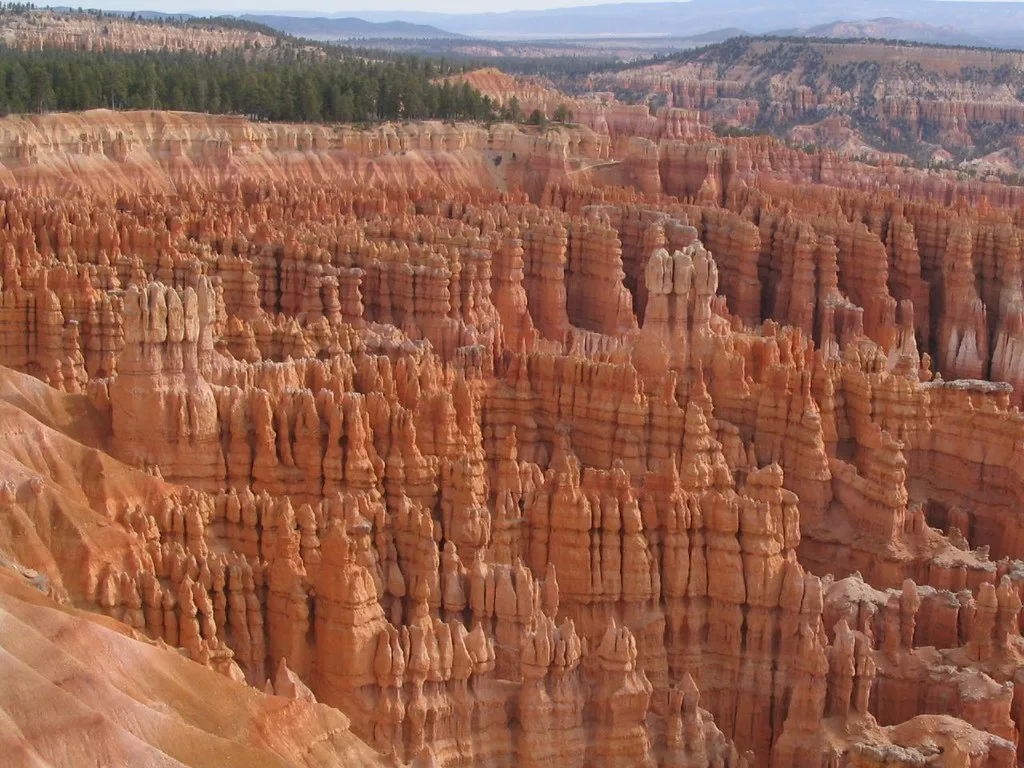
Bryce Canyon National Park/ Flickr
Canyonlands National Park
Canyonlands National Park is an incredible destination in Utah filled with breathtaking vistas, deep canyons, and rugged terrain. It is divided into four districts, each offering a unique experience.
The Island in the Sky district has sweeping views of the landscape from high mesas and deep canyons. The Maze district is a remote and rugged region of the park with few roads and no trails. The Needles district is filled with towering spires, deep canyons, and expansive views.
Lastly, the rivers district is a watery wonderland of canyons, gorges, and rivers. Whether you are looking for an exciting adventure, a peaceful retreat, or just a beautiful view, Canyonlands National Park has something for everyone.
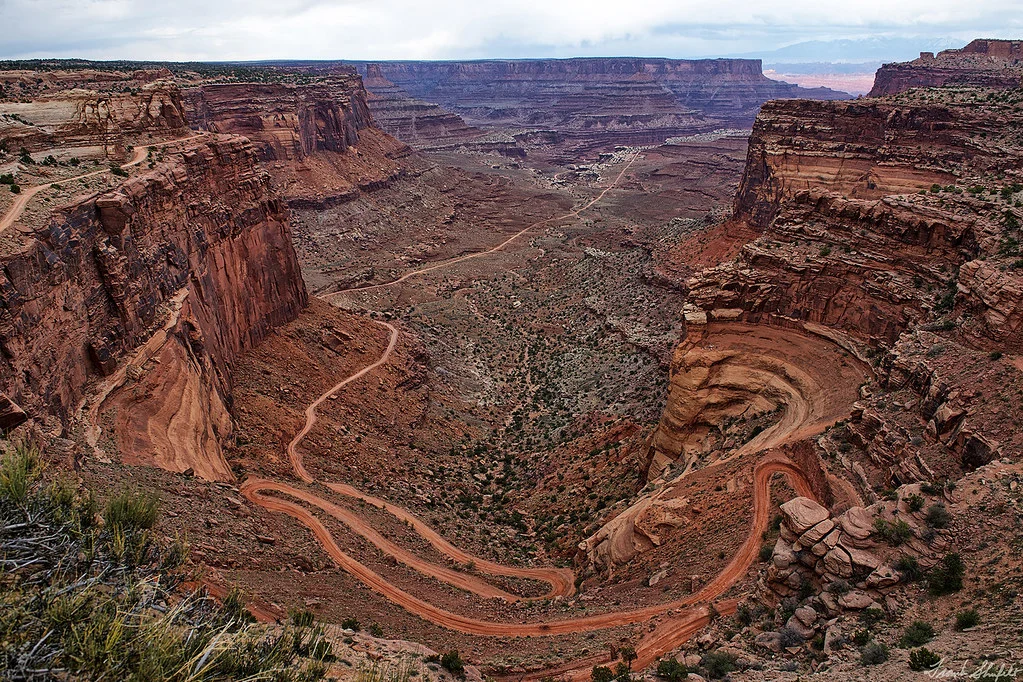
Canyonlands National Park/ Flickr
Capitol Reef National Park
Capitol Reef National Park is a stunningly beautiful park located in south-central Utah. It is known for its colorful cliffs, canyons, and sandstone domes, as well as its unique geological features, including the Waterpocket Fold, a 100-mile long wrinkle in the earth’s crust.
Visitors to the park can explore its vast landscape on foot, by bike, or by car. The park offers over 100 miles of hiking trails, including a 16-mile section of the historic Mormon Pioneer National Historic Trail. Other activities in Capitol Reef National Park include camping, horseback riding, rock climbing, wildlife viewing, and photography.
There is also a variety of cultural and historical attractions, including the Fruita Schoolhouse and Gifford Ranch Homestead. Capitol Reef National Park is a must-see for anyone looking to explore the spectacular beauty of Utah’s red-rock country.
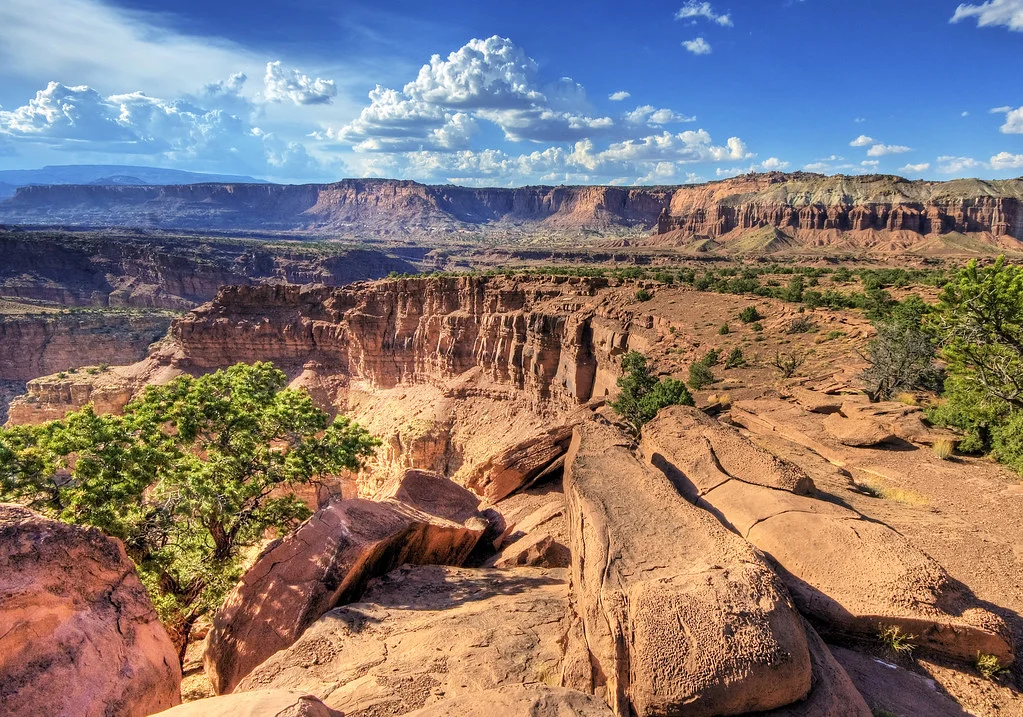
Capitol Reef National Park/ Flickr
Zion National Park
Zion National Park is a stunningly beautiful park located in Utah. It is known for its incredible variety of landscapes, ranging from deep canyons and majestic sandstone cliffs to lush forests and rushing rivers
It is also home to a variety of wildlife, including big horn sheep and mule deer
Hiking is a popular activity in the park, with over 150 miles of trails to explore, ranging from easy strolls to challenging backcountry treks. Zion is an incredibly diverse and captivating park, offering something for everyone to enjoy.
Some of the best trails in Zion include the popular Angel’s Landing and The Narrows.
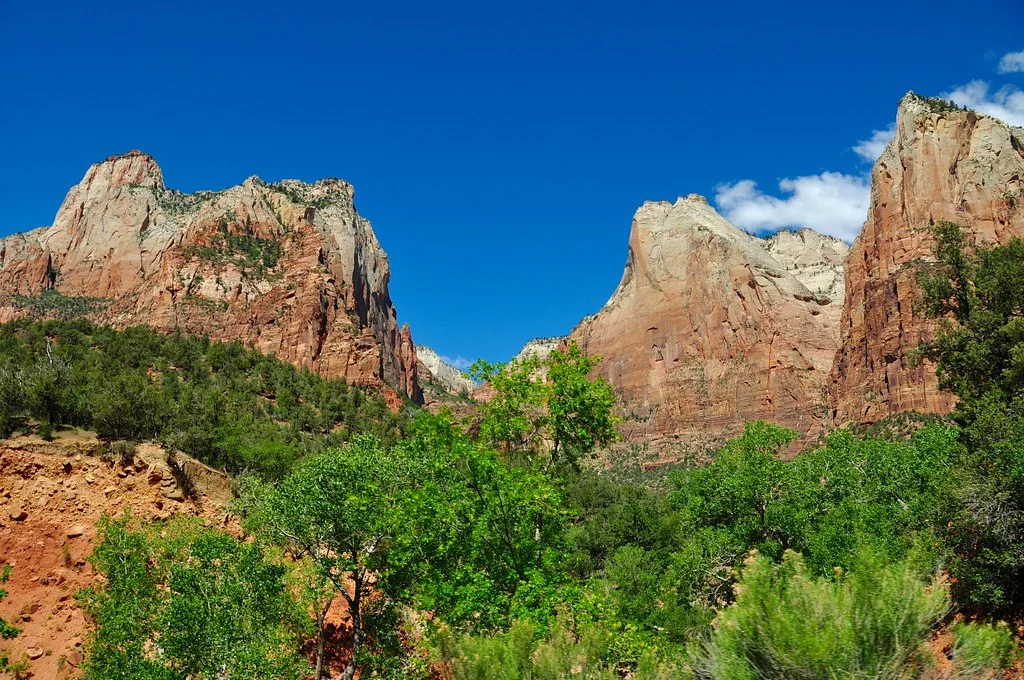
Zion National Park/ Flickr
Utah’s 8 National Monuments
Bears Ears National Monument
Bears Ears National Monument is a 1.35 million acre protected area in southeastern Utah that was created to protect its diverse cultural, historical, and natural resources. The monument is co-managed by five Native American tribes, who hold the area sacred.
The monument includes over 100,000 archaeological sites, including rock art, ancient dwellings, and agricultural sites, that tell the story of a rich and diverse human history dating back to the Ancestral Puebloan people.
Bears Ears is also home to numerous rare species of plants and animals, including the rare Utah prairie dog, and is a popular destination for hikers, climbers, and campers. Bears Ears National Monument is a testament to the importance of protecting our natural and cultural heritage for generations to come.
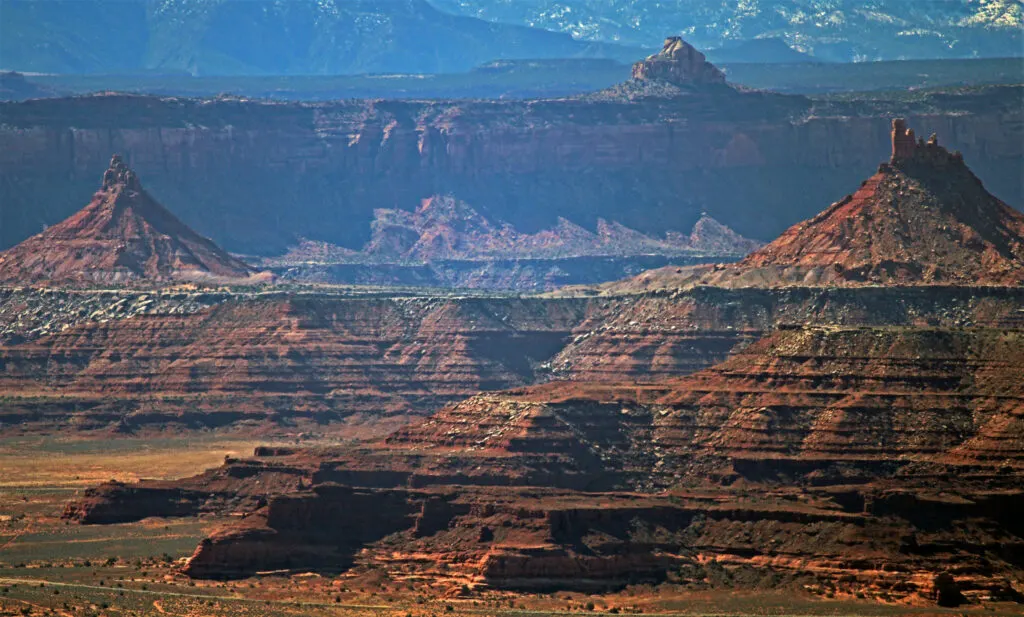
Bears Ears National Monument / Flickr
Cedar Breaks National Monument
Cedar Breaks National Monument is a stunning natural area located in southwestern Utah. The monument is just under 3,000 acres and sits atop a 10,000-foot plateau, surrounded by a sea of colorful hoodoos and other unique rock formations.
The area includes a variety of habitats, ranging from alpine meadows to aspen and fir forests, juniper and sagebrush slopes, and even rare bristlecone pine trees.
Visitors to Cedar Breaks can explore the area on foot or by car, taking in the incredible views and unique geological formations, as well as the abundant wildlife, including deer, elk, marmots, and pikas. Cedar Breaks is truly a magical place to explore, and should not be missed by anyone visiting the area.
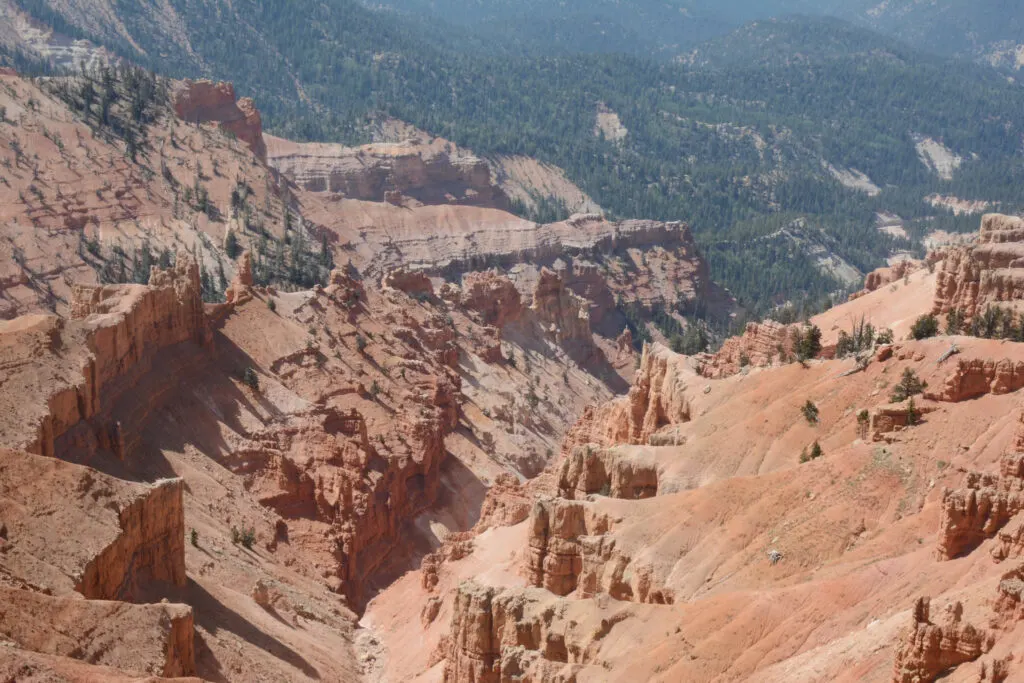
Flickr
Dinosaur National Monument
Dinosaur National Monument, located in Colorado and Utah, is a unique and awe-inspiring landmark. From its massive sandstone cliffs to its lush green valleys, the Monument is a natural wonder of the American West.
The Monument was established in 1915, and is home to a vast array of dinosaur fossils and other ancient remains. Visitors can explore the Monument’s fossil-rich quarries, hike along its many trails, and enjoy the scenic views of the Green and Yampa rivers.
The Monument is also home to a variety of wildlife, including bighorn sheep, golden eagles, and elk. With its breathtaking scenery, fascinating fossils, and abundant wildlife, Dinosaur National Monument is a must-see destination for anyone exploring the American West.
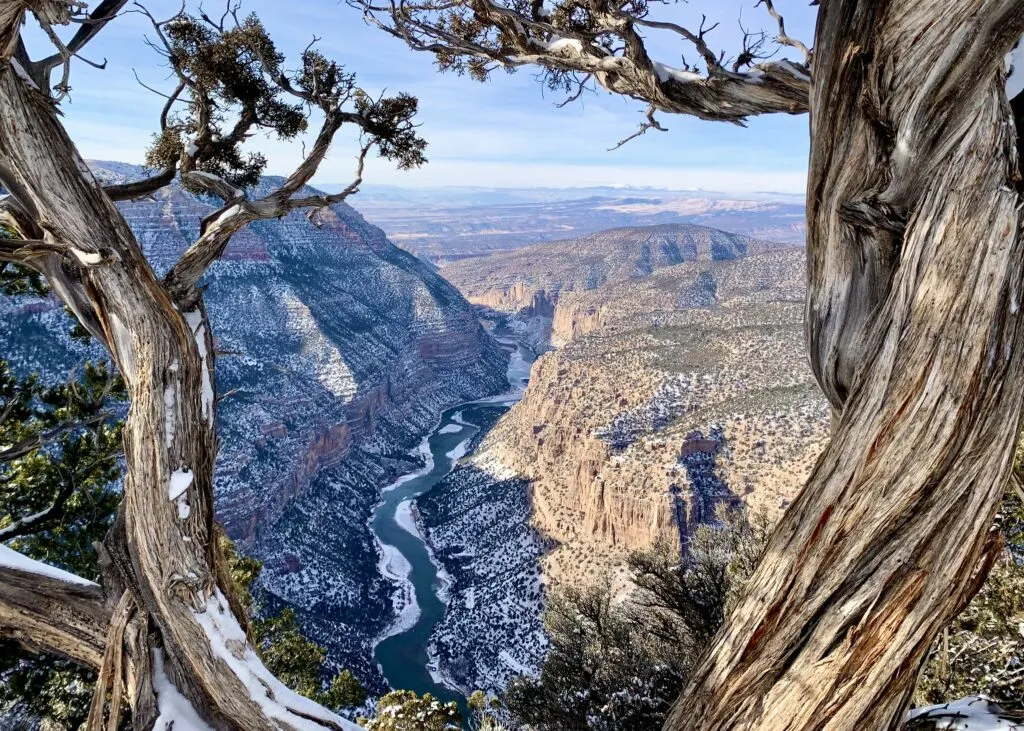
Flickr
Hovenweep National Monument
Hovenweep National Monument is a U.S. National Monument located in the Four Corners region of the Southwestern United States. The monument consists of six prehistoric Ancestral Puebloan villages spanning 1,000 years of history.
The sites are located in southwestern Colorado, southeastern Utah, and northeastern Arizona. The Monument is managed by the National Park Service, and is known for its spectacular views of the canyons, mesas, and towers that were constructed by the Ancestral Puebloans.
Visitors can explore a variety of sites, including the Tower of the Four Corners, Cajon Group, Horseshoe and Hackberry Group, Holly Group, Cutthroat Castle, and Goodman Point. The Monument offers a variety of ranger-led programs, including hikes, lectures, and tours. The Hovenweep National Monument is a unique and important site that is full of history and natural beauty.
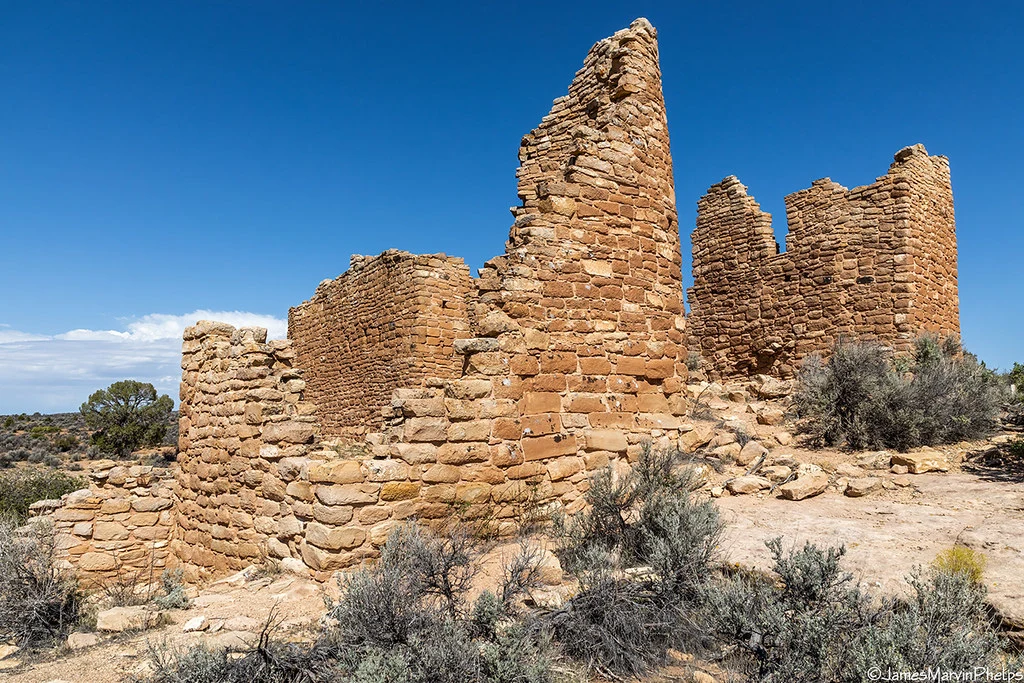
Flickr
Natural Bridges National Monument
Natural Bridges National Monument is a U.S. National Monument located in southeastern Utah, near the town of Blanding. It features three large natural bridge formations, carved from the white sandstone of the canyon walls by erosion.
The Monument covers a total of 8,959 acres of land, and is managed by the National Park Service. The Monument is known for its stunning natural beauty, with its deep canyons, towering spires and sandstone formations, and its three natural bridges, which are each named: Sipapu, Kachina, and Owachomo.
The Monument also features several trails and campgrounds, allowing visitors to explore the Monument on foot or by car. In addition to its natural beauty, the Monument is home to a variety of wildlife, including bighorn sheep, deer, coyotes, and many species of birds, reptiles, and amphibians.
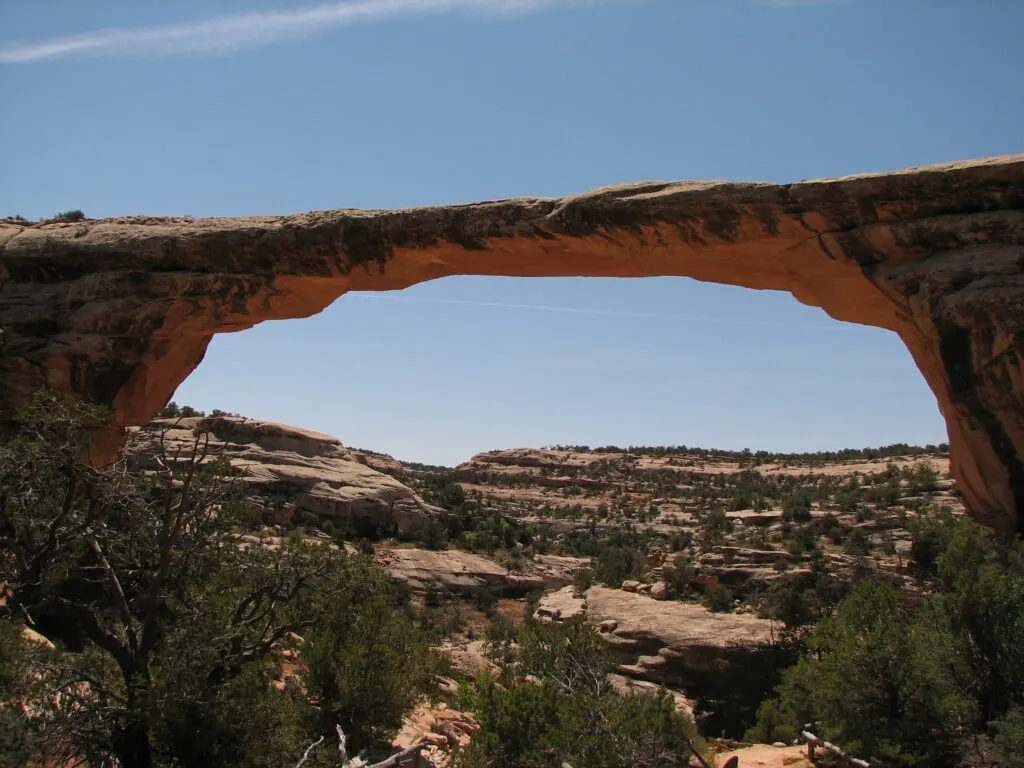
Rainbow Bridge National Monument
Rainbow Bridge National Monument is a U.S. National Monument located in southern Utah near the Arizona border.
The monument is managed by the National Park Service and is the largest known natural bridge in the world, measuring 290 feet (88 m) from base to top and spans 275 feet (84 m) across the Bridge Canyon. The bridge is made of sandstone and is an impressive formation of steep walls, deep canyons, and a span of rock which stands out from the surrounding landscape.
The monument is a popular destination for hikers, photographers, and sightseers who visit to experience the beauty of the bridge and the surrounding area.
Visitors can explore the nearly-untouched canyon, take part in ranger-led tours, or simply enjoy the view from the top of the bridge. Rainbow Bridge National Monument is a stunning reminder of the natural wonders that can be found in the United States.
Grand Staircase-Escalante National Monument
Grand Staircase-Escalante National Monument is a protected area located in southern Utah. It is one of the few places in the United States that is virtually untouched by humans.
The Monument spans nearly two million acres of some of the most rugged and remote land in the country. It is home to a variety of geological formations and landscapes including the Kaiparowits Plateau, the Grand Staircase, canyons, and slot canyons.
The Monument is also home to a variety of wildlife, including bighorn sheep, mule deer, mountain lions, and eagles. Grand Staircase-Escalante National Monument offers a unique outdoor experience for visitors, with opportunities for scenic drives, camping, hiking, and horseback riding.
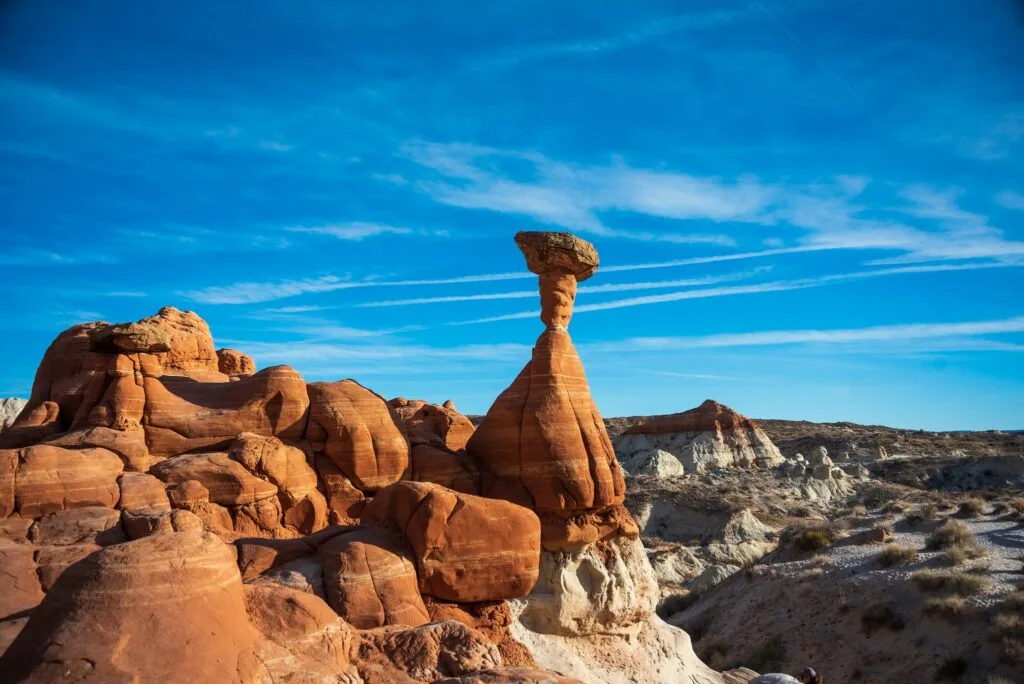
Flickr
Timpanogos Cave National Monument
Timpanogos Cave National Monument is a beautiful and unique geological site located in Utah. The cave is known for its stunning limestone formations and its three distinct caves, Hansen Cave, Middle Cave, and Timpanogos Cave.
The cave is filled with incredible formations such as stalactites, stalagmites, helictites, and other rare formations. Visitors can explore these caves and witness the breathtaking beauty of the area. The monument is also home to a wide variety of wildlife, including mule deer, bobcats, and bats.
In addition, the monument is known for its educational programs and guided tours, which provide visitors with an opportunity to learn more about the caves and their history. Timpanogos Cave National Monument is a must-see destination for anyone interested in geology and exploring the great outdoors.
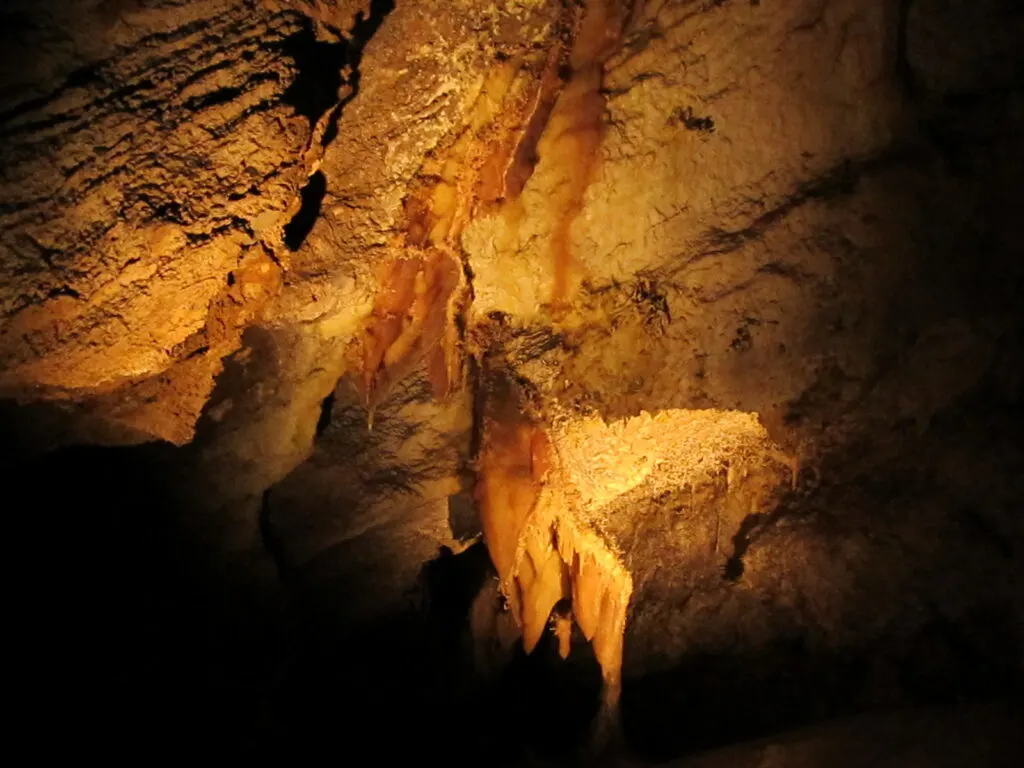
National Historical Parks
Golden spike national historical park
Golden Spike National Historical Park preserves the site of the joining of the first transcontinental railroad in the United States. Located in western Utah, the site commemorates the event that occurred on May 10, 1869, where the Central Pacific and the Union Pacific Railroads were joined together.
The park features a visitor center and museum, interpretive trails, and a recreation of the original Promontory Summit scene of the Golden Spike ceremony. Visitors can explore the history of the transcontinental railroad, witness the reenactment of the Golden Spike ceremony, and learn about the many workers involved in the project.
The park also offers educational programs and special events throughout the year. Golden Spike National Historical Park is a must-see destination for anyone interested in the history of the United States.
National Recreation Sites
Glen Canyon National Recreation Site
Glen Canyon National Recreation Area is an incredible place to explore. Located on the Utah-Arizona border, this recreation area is home to a vast array of terrain that spans from deep canyons to high plateaus.
Visitors will find a variety of activities to enjoy, including camping, boating, fishing, hiking, and more. The recreation area features breathtaking views of the spectacular Lake Powell, a 186-mile long reservoir that is the second largest man-made lake in the United States.
The lake is renowned for its red sandstone cliffs and narrow canyons, and visitors can explore the lake by boat or kayak. In addition, the area is home to numerous archaeological sites, providing visitors with the chance to explore the area’s rich history and culture.
With plenty of activities to enjoy and stunning scenery to admire, Glen Canyon National Recreation Area is a great destination for outdoor enthusiasts.
Utah’s National Historic Trails
Utah has 4 National Historic trails including:
California National Historic Trail
The California National Historic Trail is a network of trails that stretch for over 5,000 miles across the western United States. The trail was established in 1992 to commemorate the history and culture of the pioneers who traveled the trails during the 19th century.
The trail extends from Missouri to California and passes through many of the states in between, including Nebraska, Wyoming, Colorado, Utah, Nevada, and Arizona.
The trail is divided into 12 sections, each highlighting the experiences of the various groups of pioneers who traveled the trails. From the Mormons who traveled the Mormon Pioneer Trail to the Forty-Niners seeking their fortunes in the California Gold Rush, the California National Historic Trail tells the story of the nation’s western expansion.
Today, visitors to the trail can experience the stories of the pioneers through a variety of activities, such as hiking, biking, horseback riding, and camping.
Mormon Pioneer National Historic Trail
The Mormon Pioneer National Historic Trail is a 1,300-mile long trail that follows the route taken by members of The Church of Jesus Christ of Latter-day Saints (LDS) when they migrated from Illinois to Utah in the mid-1800s.
The trail begins in Nauvoo, Illinois, and continues through Iowa, Nebraska, Wyoming, and Idaho before ending in Salt Lake City, Utah. Along the trail, visitors can explore the many historic sites associated with the LDS pioneers, such as their camps, forts, and trading posts.
The trail is also one of the most important symbols of the LDS faith and is a reminder of the courage and faith of the early pioneers who left their homes to follow their religious beliefs.
Old Spanish National Historic Trail
The Old Spanish National Historic Trail is a historic trail that runs from Santa Fe, New Mexico, to Los Angeles, California. It was first used by Spanish settlers in the late 1700s and early 1800s, and is now recognized as a National Historic Trail.
The trail covers a total of 2,700 miles and passes through five states – New Mexico, Colorado, Utah, Nevada, and California. Along the trail, travelers will find historic sites and artifacts, as well as stunning landscapes and views. The trail is a great way to explore the diversity of the American West and to learn about the history of the area.
Pony Express National Historic Trail
The Pony Express National Historic Trail in Utah is a scenic National Historic Trail that follows the path of the original Pony Express.
The trail stretches from the town of St. Joseph, Missouri, to Sacramento, California. It includes over 2,000 miles of historic trails, including portions in Utah. The Pony Express was one of the most important mail delivery services of its time, delivering mail and newspapers from the East Coast to the West Coast in just 10 days.
In Utah, the trail passes through the cities of Salt Lake City, Ogden, and Provo, as well as the colorful red rock canyons and deserts of the region. It is a popular destination for horseback riding, hiking, and camping. It is a unique experience that allows visitors to explore the history and beauty of the American West.
***


